cpplus2014
Latest

Sigma's unique dp2 Quattro camera can be yours in August for $999
The dp2 Quattro is a strange looking camera. Its extra-wide design is quite unusual, but if Sigma's CEO is to believed, the 29-megapixel shooter will deliver superior image quality thanks to its unique sensor. The Quattro layers pixels in order to capture red, green and blue colors vertically -- there's no need for interpolation, resulting in sharper, more vibrant photos. The company claims that the dp2 can output an equivalent of 39 megapixels, based on tests that pit the chip against traditional sensors. The dp2 is expected to ship in early August for $999, including a fixed 30mm (45mm equivalent) f/2.8 lens. Pricing info for the dp1 and dp3, which come with permanently attached 19mm and 50mm lenses, respectively, is not yet available.
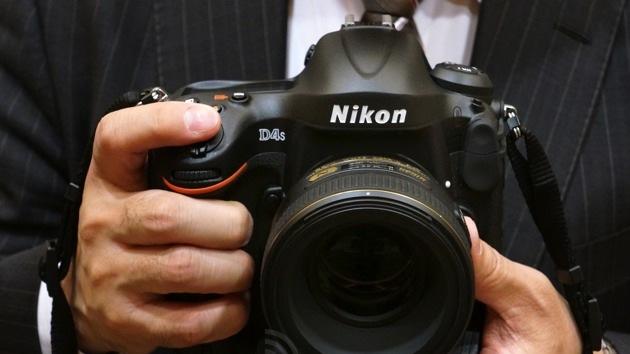
Nikon's new D4S DSLR improves speed and focusing, adds ISO settings up to 409,600
The Nikon D4S has been teased, displayed in a plastic case and now, it's official -- and we even got to play with it. There's a substantial list of what hasn't changed (the same 16.2-megapixel image size, to begin with), but if you're a high-level photographer already in possession of a D4 (or perhaps even a D3S), you'll be more interested in those differences. Firstly, while the sensor will offer the same sized images, but it's a newly developed piece of hardware, with a focus on better noise reduction. ISO now ranges from 100 - 25600, with its Hi4 setting cranking that up to a mind-boggling 409600. If you're currently handling a D4, you can also expect to see substantial noise reduction: the D4S' ISO 1600 will be comparable to the D4's ISO 800 setting. Nikon's new DSLR also delivers changes to to the auto-focus system for both photos and video. Behind the lens, there's improvements to both the tracking system and the algorithms that govern how the D4S focuses. A new Group AF mode tracks five separate points, meaning that a moving subject (and even a moving photographer) should pose less of a threat to crisp imaging. On video, (where you can now capture uncompressed 1080p resolution at 60 frames) tracking has been bumped up to 11 frames per second on full auto-focus and exposure. Hopefully fixing one of our major issues with the D4, the new model also comes with a more substantial battery pack, up from 2,000mAh to 2,500mAh. The new unit actually weighs more, but reductions on the D4S' body means it adds just seven ounces, total, over 2012's D4. Expect the camera to land on March 6th, and prepare your bank account for the hit: it's expected to retail for $6,500. We've got some early impressions and details on some minor hardware changes, including more substantial grips, right after the jump.

Mirrorless cameras, pricey point-and-shoots shine at Japan's CP+
While Japan's prominence continues to wane when it comes to consumer electronics in general, the country remains enormously relevant in the digital imaging space. Canon and Nikon dominate the market, alongside other mainstream players like Sony and Panasonic. Manufacturers like Casio, Fujifilm, Olympus, Sigma and Ricoh continue to release compelling models, too -- your own camera probably got its start in an office tower near Tokyo, as other shooters will for years to come. Each year, Japanese consumers gather at CP+ in Yokohama, a four-day trade show that's served as a venue for camera makers to show off their new products to local audiences for more than 50 years. Following the final PMA show in 2010, CP+ has been an important event for us as well -- CES hasn't caught on with the camera industry, and with Photokina held only once every two years, this February photo fest is the place to be.

Canon's new Rebel T5 DSLR camera is unapologetically for beginners (hands-on)
If you're angling to upgrade from your smartphone or your point-and-shoot to something a little more serious, you're probably not going to jump for the top model out -- unless you have that kind of money. That's where Canon's new entry-level DLSR comes in, with 18-55mm kit lens, for $550. The EOS Rebel T5 boasts an 18-megapixel sensor, ISO levels from 100-12800 and all the controls you'd expect to find on Canon's understandably popular DSLR series. As the entry-level model, however, there's bound to be some drawbacks -- and there were few that we noticed during our short playtime at CP+ 2014. With 9-point autofocus, you can expect some sluggish focusing: many DSLRs have 20 times the number of focal points. Once the camera does latch onto a subject, you can expect DSLR-quality shots. The Rebel T5 also packs in a consecutive shooting mode, but at three frames per second (hold onto the shutter key while in the right mode, and it captures away), we were hoping for something more. Perhaps we've been spoiled by the leaps and bounds made by ILC cameras (including Canon's own) but the Rebel T5 is best seen as a gentle introduction to Canon's lens selection and those subsequent camera upgrades.

Olympus' small and mighty E-M10 is priced to sell (hands-on)
It's been more than two years since Olympus unveiled its OM-D E-M5, but that camera's retro-inspired design is clearly here to stay. The latest model in the series, the E-M10, is priced more like a step-up camera than a flagship, but it hardly skimps on features, with the same 16-megapixel Micro Four Thirds sensor and classic good looks as 2012's flavor. There's also a very nice collapsable 14-42mm f/3.5-5.6 kit lens with an integrated cap, a sharp 3-inch tilting touchscreen, an integrated 1.44-megapixel EVF and built-in WiFi with a unique QR-code interface for easy pairing with the Olympus Image Share companion app. You also get an 8 fps (single autofocus) burst mode, 1080/30p video shooting, a 25,600 top ISO and 3-axis sensor-shift image stabilization (down from the 5-axis version included with the E-M5).

Aiming Olympus' Stylus SP-100, the 50x superzoom camera with a gun sight (hands-on)
There are bigger superzooms out there, but Olympus' new Stylus SP-100 is trying to make you a better long-distance shooter alongside its 50x zoom functionality. A see-thru viewfinder window with a laser-projected bulls-eye right in the middle jumps out from the top of the camera when you press the appropriate button. Then, while you're at a high level of zoom, the window acts as a shortcut way of ensuring you're on-target without zooming out to reassess. Olympus even set up a faux flying bird right in the middle of the CP+ show floor in Japan, hanging from the ceiling supports to draw our full-zoom fire. It's a clever shortcut to assist with framing -- it seems pitched at beginner photographers, rather than those already used to telephoto lenses and DSLRs. It's not perfect; you'll still need to ensure your shutter speed is up to scratch to grab a decent image, but it's certainly a good way of adding some extra guidance. The 16MP Stylus SP-100 feels lighter than an entry-level DSLR and there's still a built-in flash above that new framing-assist system. Alongside that, this superzoom is also capable of up to 7 fps burst shooting (up to six frames) which should also help up the chances of getting the right actual shot. You'll be able to test it out for yourself next month, when it lands in the US priced at $400.

Fujifilm's dial-filled X-T1 is a manual shooter's dream (hands-on)
On paper, the most significant addition to Fujifilm's X-T1 is its weather-resistant housing. But you'll need one of three as-of-yet-unreleased weather-sealed lenses in order to take advantage -- the 18-55mm f/2.8-4 kit optic isn't up to snuff when it comes to keeping out water, sand and snow, so if you opt for the $1,700 bundle, you'll be out of luck. Instead, we're quite taken with the camera's comprehensive control layout, which includes dedicated dials for exposure compensation, shutter speed and ISO (!) mounted up top. Some lenses also include an integrated exposure dial, so you can set the full exposure manually without any need to dig through menus. There's also a 16.3-megapixel APS-C X-Trans CMOS II sensor and an EXR Processor II, along with a 3-inch, 1.04M-dot tilting LCD and a really nice 2.36M-dot OLED viewfinder for framing shots.

Sigma's CEO wants you to focus on the dp2 Quattro's new sensor, not its peculiar design
This was a bit of a shocker to us as well: Kazuto Yamaki, Sigma's chief executive and lead design guru, doesn't want you to be distracted by the dp Quattro's strange shape. The extra-wide footprint is of course what first turned us on to this high-end camera, but the takeaway here should be the shooter's 29-megapixel Foveon X3 CMOS direct image sensor, which Yamaki says enables a reduced file size and better high-ISO performance. That refreshed chip operates similarly to traditional color film, using multiple layers to capture enhanced detail. That, along with a new processor, should produce sharper, more realistic images with vibrant colors -- something Sigma describes as "full-bodied image quality." Without an opportunity to review full-resolution samples, we can't really speak to the dp Quattro's performance, but there's no question that company reps are very excited about this new device. The unusual design is what captured our attention, and judging by the long queue at Sigma's CP+ booth in Yokohama, Japan today, consumers are quite curious as well. Our first thought was that the company widened the body to accommodate a larger display, but the 920k-dot, 3-inch LCD is shockingly ordinary. The model seen here is the dp2, which features a fixed 28mm f/2.8 lens, but Sigma is also releasing the dp1, which includes a 45mm f/2.8 optic and the dp3, which sports a 75mm equivalent lens (yes, you'll need three cameras to take advantage of all three focal lengths). Since there's a lot of real estate to work with, the buttons and control dials have plenty of room to stretch out -- it literally couldn't feel less cramped, so if you're often accidentally tapping more than one button, you'll love what Sigma's done here. There's also a hot shoe, and once you attach a full-size flash, the dp may feel better balanced.

Casio's new EX-100 camera makes it harder to mess up the shot by taking nine different ones (hands-on)
Casio, famed creator of nostalgic digital watches, calculators and often unremarkable point-and-shoot cameras, just surprised us at Japan's premier photography show. Its EXILIM EX-100 is arguably the most interesting compact camera we found on the CP+ show floor this year. Keeping a constant f/2.8 aperture while still offering 10.7x zoom should mean plenty of light reaches the point-and-shoot's imaging sensor -- good thing that the show floor had a suitably stylish demo area to zoom into and see how it fared. While we didn't have samples to scrutinize fully, we were pleasantly surprised by the results we saw on the substantial 3.5-inch screen, which articulates in all the directions you'd expect it to. Underneath, there's even an extra fold-out stand to prop the camera up both horizontally or vertically, although we'll admit the device itself is a little chunky compared to the competition. What really interested us was a new dual-bracketing setting that captures a shot nine times, varying two parameters (white balance, exposure, focus, color saturation, shutter speed) in the process. In short, making it harder to flub a shot if whoever's holding the camera doesn't quite get the fundamentals. While there are four presets, you can pick which variables are switched up within the "premium bracketing" mode. The camera launches at the end of March, but the decent fixed lens and unusual software talents don't come cheap; 89,000 yen ($873) puts the EX-100 in a pricier... bracket than current favorites like Sony's RX100M2 ($750), and a similarly specced Olympus Stylus 1 ($700). For now, it also remains a Japan-only prospect.

Canon's burly PowerShot G1 X Mark II is a pleasure to use
This week, we met Canon's G1 X Mark II. Judging by its nomenclature, we expected a straightforward update to 2012's PowerShot flagship. Instead, this year's model is only like its predecessor when it comes to size -- the camera's specifications and design have been refined significantly. There's no longer an optical viewfinder and the 3-inch touchscreen tilts up and down instead of out to the side, but otherwise, the camera's been modified for the better, with a more powerful 24-120mm f/2-3.9 zoom lens, a new 1.5-inch sensor and a faster DIGIC 6 processor. That powerful combo yields a much more capable point-and-shoot -- with the Mark II, the G1 X can finally justify its $800 price. We caught up with the Mark II at the annual CP+ trade show in Yokohama, Japan, and while we weren't entirely convinced of the camera's practicality based on press photos and a spec sheet, a few minutes of shooting helped seal the deal. This G1 X refresh was comfortable to use and very responsive, from the speedy zoom toggle to the super-fast focusing. The LCD was quite sharp and bright, and while we missed having an optical viewfinder to play with, the boosted functionality in other departments made the tradeoff worthwhile. (Canon's also planning to offer an external electronic viewfinder -- pictured above -- which seems like a reasonable compromise.) We did struggle with focusing in macro mode, just as we did with the original X, but the lens performed quite nicely with subjects a bit more in the distance, so if you're not planning to shoot close-ups of flowers, you should be fine. Video shooters beware: while there is support for 1080/30p captures, there's no microphone input or headphone jack. In this price range, we're still inclined to recommend Sony's RX100 Mark II, despite its slightly smaller 1-inch sensor. We haven't had a chance to review full-res images from the Canon, but based on the Sony camera's superior focusing and compact size, it's likely the better choice for many photographers. That model's available now for $700, while the $800 G1 X is expected in stores this April. Check out our hands-on video for a closer look.
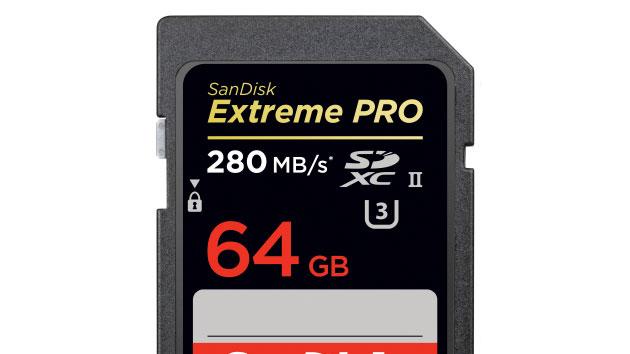
SanDisk's latest flagship SD card supports extremely fast write speeds, 4K video
With affordable 4K cameras from Panasonic and Sony set to ship soon, it's time for flash memory manufacturers to begin readying stockpiles of high-speed SD cards. Today, SanDisk is announcing its latest flagship, the Extreme Pro SDHC/SDXC UHS-II. It exceeds the new UHS Speed Class (U3) spec, supporting continuous write speeds of up to 250MB/s. While the card is most appropriate for folks shooting 4K video, it'll also come in handy when you're snapping continuous RAW stills at high frame rates, letting you unload the camera's buffer just as quickly as you can fill it. The new cards will ship in April in 16GB to 64GB capacities, with prices ranging from $120 to $300. There's also a new U3 card reader that's designed to let you take full advantage of the SDXC card's 280MB/s transfer speeds. That device will also be available in April, with a $50 MSRP. Update: The card supports a 250MB/s write speed, as originally reported. The read speed measures 280MB/s.

Canon PowerShot SX700 HS ships in March with 30x lens, WiFi, $350 price tag
In the market for a compact superzoom? Canon's new PowerShot SX700 HS is definitely worth a look. This SX280 HS replacement includes a 16.1-megapixel CMOS sensor paired with a DIGIC 6 processor, an f3.2-6.9 25-750mm (30x) zoom lens and a 3-inch 922k-dot LCD. The camera's small enough to tuck away in a jacket pocket, but it still includes a new extended hand grip on the front, making it comfortable to hold with the lens extended. It also supports 1080/60p video capture, and has WiFi and NFC on board, for remote app controls and wireless uploads to the web. Expect the SX700 to hit stores next month in black and red for $350.
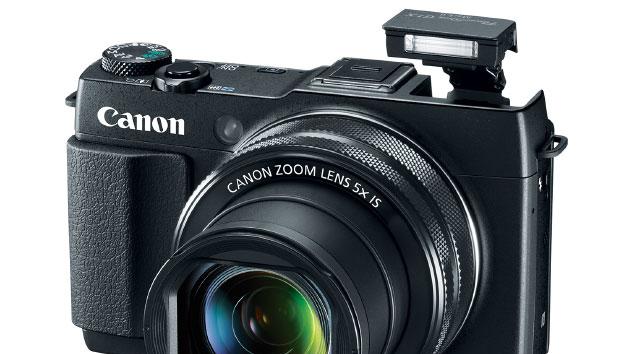
Canon updates high-end PowerShot lineup with $799 G1 X Mark II
Canon introduced its PowerShot G1 X at 2012's CES, and two years later, the pricey high-end point-and-shoot is ready for an update. This year's iteration, the G1 X Mark II, includes a 12.8-megapixel CMOS sensor, and like its predecessor, this new chip measures 1.5 inches diagonally, enabling some pretty spectacular images. There's a 24-120mm f/2-3.9 zoom lens, so you can expect shallow depth of field throughout the maximum-aperture range, and sharp shots even in low light. It includes a 1.04M-dot 3-inch tilting touchscreen, a DIGIC 6 processor, 12,800 top ISO and 1080/60p 1080/30p MP4 video capture. Additionally, you can pair the Mark II with Canon's companion apps via WiFi and NFC for remote shooting and wireless image transfers. There will also be an XGA electronic viewfinder accessory that mounts on the hot shoe, should you prefer an EVF. Pricing for that add-on is TBA, but expect the G1 X Mark II to hit stores in April for $800. Update: The G1 X Mark II supports 1080/30p, not 60p video capture.

Sony debuts three superzooms and two compact Cyber-shots for CP+
Sony announced but one camera at CES, an entry-level mirrorless interchangeable-lens model called the Alpha 5000. With CP+ gearing up just outside Tokyo, however, it's time to lift the point-and-shoot floodgates. There are three superzooms and two pocketable cams on the docket this year, in addition to the brilliant A6000. The HX400V and WX350 are arguably the most compelling offerings in each category, and they're joined by alternatives that should appeal to a broad range of consumers -- the H400, the H300 and the (relatively) petite W800. All but that last model include 3-inch LCDs (the W800's display is 2.7 inches), but the similarities end there. The HX400V ($500) features a 20.4-megapixel CMOS sensor, an f/2.8-6.3, 24-1200mm (50x) lens with OIS, a top sensitivity of ISO 12,800, a 10 fps burst mode, 1080p video and 4K still image output. There's GPS, WiFi and NFC, a BIONZ X processor under the hood and a Multi Interface Shoe for connecting a variety of Sony add-ons. The H400 ($320), which shares a nearly identical model name, falls a bit short on the spec front. There's a 20.1MP CCD sensor, an f/3.4-6.5, 24.5-1543mm (63x) lens with OIS, a 3200 top ISO, a 0.8 fps burst mode and 720p video capture. The H300 ($220), meanwhile, sports a 20.1-megapixel CCD sensor, an f/3-5.9, 25-875mm (35x) lens with OIS, a top ISO of 3200, a 0.8 fps burst mode and 720p video. That model runs on four AA batteries, while the other four are powered by Lithium-Ion cells. Moving on to the compacts, the WX350 ($320) shares the BIONZ X processor of its larger sibling, the HX400V. There's an 18.2-megapixel CMOS sensor, an f/3.5-6.5, 25-500mm (20x) G lens with OIS, a top sensitivity of ISO 12,800, a 10 fps burst mode, 1080p video capture and 4K still image output. It sports WiFi and NFC connectivity, and can fire off 470 shots on a single charge. Finally, if you're on a very tight budget, the W800 ($80) covers the basics with a 20-megapixel CCD sensor, an f/3.2-6.4, 26-130mm (10x) lens, a top sensitivity of ISO 3200, a 1 fps burst mode and 720p video capture. You can pick up that model in March, along with the HX400V, H400 and WX350, while the H300 is expected in stores later this month.

EOS Rebel T5 is Canon's cheapest DSLR, priced at $550 with 18-55mm lens
If you're on a tight budget and looking to buy a DSLR, we might suggest you consider a mirrorless camera instead. But if you're dead set on building out your EOS lens collection, Canon's Rebel T5 is at least a more capable choice than its predecessor, the 2011-era T3. This year's model includes an 18-megapixel APS-C CMOS sensor, a DIGIC 4 processor, a sensitivity range of ISO 100-12,800 and 1080/30p video capture. There's also a 9-point AF system and 3 frames-per-second continuous shooting -- generally not much to write home about, but as a starter cam it'll do just fine. The T3i will remain for sale, and can be had for $509 including a lens over at Amazon. The T5, for its part, is set to retail for $550 including an 18-55mm f/3.5-5.6 kit lens, or $450 for the body only. Expect to see it in stores next month. Update: Canon has opted to not offer the T5 without a lens, so your only option is to purchase the kit for $550.

Sony's A6000 is the mirrorless camera you'll want to own, ships this April for $800 with lens
Well, Sony's really done it this time -- your still-crisp NEX-6 may now be marked for an early retirement. The A6000 is here to replace one of 2012's most exceptional shooters, and despite the NEX-6's success, this fresh 2014 model is the one to own. There's a brand-new 24.3-megapixel CMOS APS-C sensor paired with a BIONZ X processor at the core, enabling what Sony's calling the "world's fastest autofocus." We're talking lag of just 0.06 second, thanks to the 179 phase-detect and 25 contrast-detect AF points. You also get 11 fps continuous shooting with tracking AF. Those focusing improvements are most notable in our book, but the price drop is surely worth a mention, too. The A6000 will ship for $800 with a 16-50mm power-zoom kit lens, compared to the $1,000 Sony was commanding for the NEX-6 back in 2012. Like other recent Alpha CSCs, the A6000 includes an OLED viewfinder with 100 percent frame coverage and a tilting 3-inch 921k-dot LCD. You have two interface options here: the love-or-hate-it six-tile NEX menu that dates back to 2010 with the NEX-3 and NEX-5, or the recently refreshed tab-style Alpha UI, which we prefer. There's a pop-up flash, a Multi Interface Shoe, 1080/60p and 24p video capture with clean HDMI output, seven customizable buttons and 4K still image output to a compatible TV. Like its predecessor, the A6000 also includes WiFi and NFC, so you can shoot via the Android or iOS app, or transfer images from the camera to a smartphone or tablet. You also get a handful of apps on the camera itself, ranging from the free Direct Upload (for sharing images online) and Photo Retouch applications, to a few that you'll need to purchase, such as Time-lapse and Lens Compensation (for minimizing lens distortion). We had a few minutes to check out the A6000 ahead of CP+. We poked around the new interface, which we found to be a refreshing change from the NEX format of yesteryear. The A6000 is actually noticeably larger than the NEX-6, but not significantly so. The design aesthetic is similar, though the newer model has a slightly more premium look and feel than its predecessor. There are separate dials for shooting mode and settings adjustments, compared to the two-in-one control on the NEX, but the button layout is quite similar otherwise, and if you're familiar with previous NEX cameras, you should feel at home here. You can try one out for yourself at retailers this April, or peruse our hands-on shots in the gallery below.

Head 82 feet below the surface with Canon's waterproof PowerShot D30
It's a very busy CP+ for Canon. The camera maker has a handful of new models for the show, including one of the waterproof variety. The PowerShot D30, which replaces 2012's D20, boosts the waterproof rating from 33 feet to 82 feet, making it a suitable choice for all but the deepest scuba dives. There's a 12.1-megapixel CMOS sensor, a DIGIC 5 processor and support for 1080/30p video. The 5x 28-140mm lens isn't as fast as we'd like for dim underwater shoots, with an f/3.9-4.8 maximum aperture, but with the ISO bumped up a bit, it should perform decently. You can frame shots on the 3-inch 461k-dot LCD, which sports a sunlight mode for use in brighter conditions. The camera is shockproof and cold-resistant as well, and while there's no WiFi on board, it does include GPS. The PowerShot D30 is expected in stores by mid-April with a $330 MSRP.
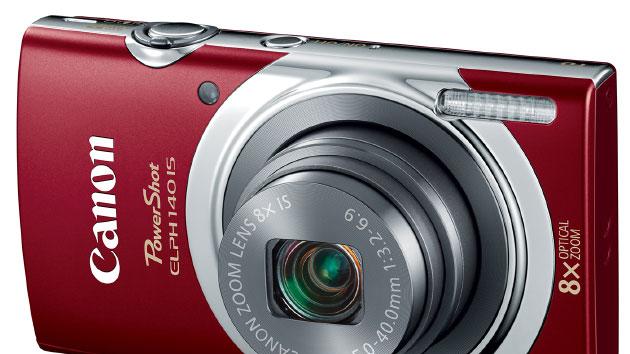
Meet Canon's latest budget PowerShots, a trio of ELPHs
Canon's higher-end PowerShot cameras are certainly more compelling, but they're also expensive. If you're on a budget, you might want to settle for one of these ELPHs. Canon is introducing three new models this week, including the ELPH 150 IS, 140 IS and 135 -- they're priced at $150, $130 and $120, respectively. The latter duo replace the A2600 and A2500, while the 150 is a new addition to the lineup. That model includes a 20-megapixel CCD sensor, while the other two feature 16-megapixel CCDs. All three have DIGIC 4+ processors and 2.7-inch 230k-dot LCDs. They also shoot 720p video, which should certainly suffice for casual web use. The pricier two models include optical image stabilization -- in fact, the 140 IS and 135 are identical, save for the 135's lack of OIS. Those two include 8x optical zoom lenses, while the 150 IS packs a 10x zoom. All three cameras are scheduled to ship later this month.
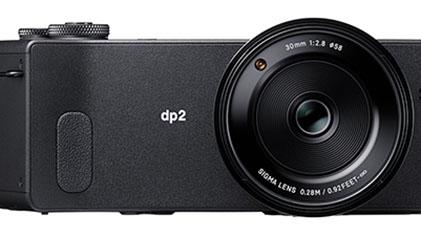
Sigma's dp Quattro cameras boast higher-resolution sensors and an extra-wide design
No, you're not looking at a projector -- it's the dp2 Quattro, the first of three cameras in Sigma's new dp Quattro lineup. That unusually wide, almost cinematic body is meant to provide a more balanced feel in the hand than the compact design of its predecessors. However, the real centerpiece is underneath: every camera has a new version of the three-layer, color-rich Foveon X3 sensor that takes higher resolution photos (20 megapixels versus 15.3) while improving both performance and battery life. Sigma has also made a leap to a faster TRUE III image processor. Unusually, there's also an optical viewfinder available for purists, which should work well with the fixed lenses. The dp2 Quattro will come with a 30mm f/2.8 general purpose lens, while the dp1 and dp3 will respectively carry 19mm wide-angle and 50mm telephoto optics. The company hasn't said just when the Quattro cameras will ship, but history suggests that they won't be cheap.

Nikon Coolpix P600 and P530 superzooms ship this month for $450-plus
If you recently came upon a Coolpix P520 under the Christmas tree, prepare to be mildly disappointed. That superzoom just reached early retirement, with today's P530 introduction. 2014's refresh brings along a similar f/3-5.9, 24-1,000mm (42x) optically stabilized zoom lens, a new 16.1-megapixel BSI CMOS sensor, 1080/30p and 60i video capture, a 3-inch fixed LCD and a built-in EVF. It also comes along with full manual control, including a dedicated mode dial. There's WiFi connectivity via the optional WU-1a Wireless Mobile Adapter ($50), but with a $450 price tag, there's really no excuse for it not to be included (and embedded, for that matter). You do, however, get built-in WiFi with the Coolpix P600, which is available for just 50 bucks more. It's also a bit more capable on the imaging front, with an f/3.3-5.6, 24-1,440mm (60x) optical zoom lens (equipped with an ED glass element), lens-shift image stabilization, a 16.1-megapixel BSI CMOS sensor and a 3-inch, 921k-dot tilt-and-swivel RGBW LCD. Like the P530, the P600 supports 1080/30p and 60i video capture and comes along with full manual control, with a dedicated mode dial as well. Both cameras also ship with a few new shooting modes, including Moon Mode, Bird Mode and a multiple-exposure option that merges up to three separate images. Both should be available later this month, with the P600 shipping in black and red for $500 and the P530 available in black for $450.


